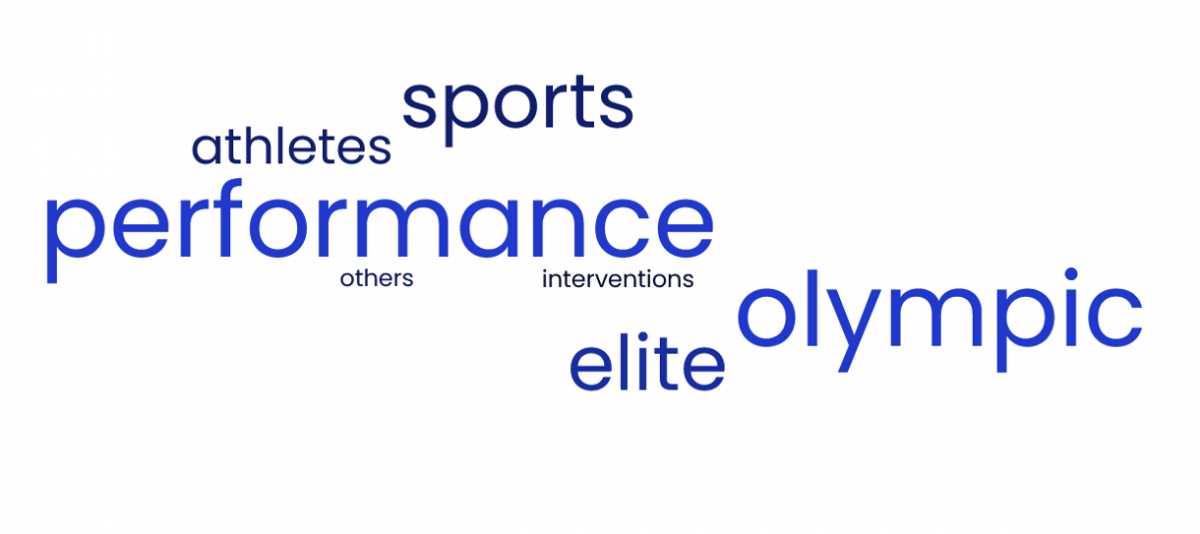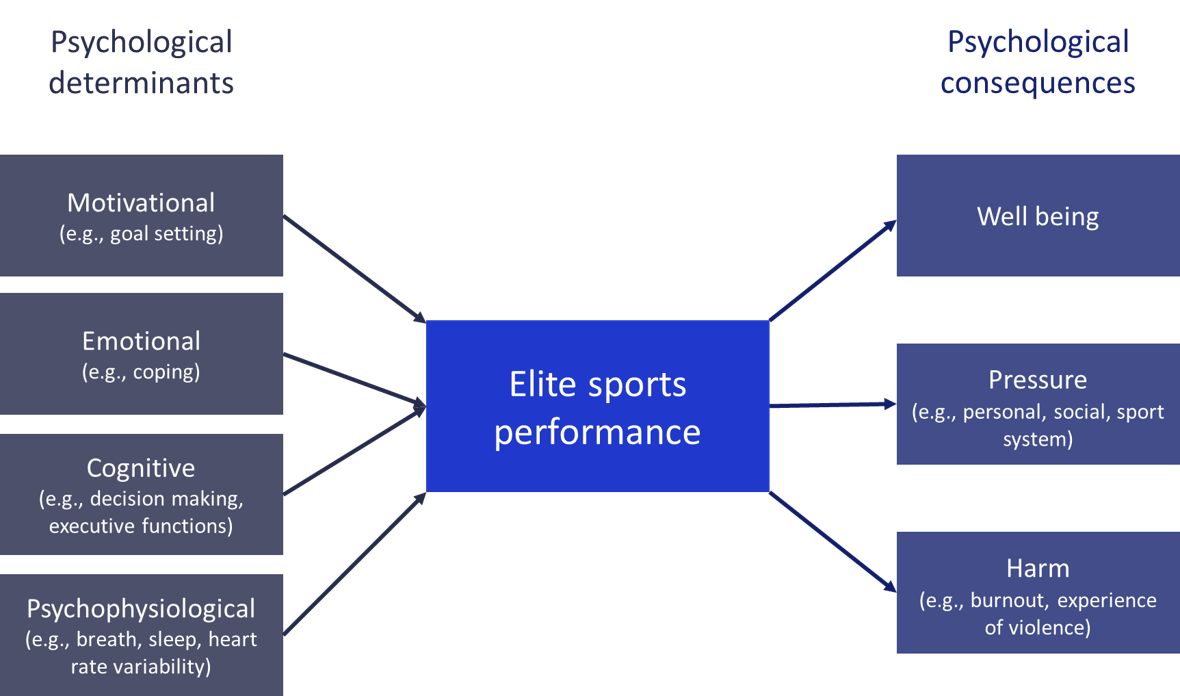Editorial: Mastering the Olympic Mind - The psychology behind peak sports performance
In summer 2024 all eyes will be on the elite athletes performing at the Olympics. This international special issue delves into the secrets of elite sports performance and reveals how athletes can best prepare their "Olympic-Mind" for the ultimate challenge.
As Paris readies itself for the 2024 Olympic Games, the spotlight turns to the essence of elite sports performance. How do athletes cultivate their “Olympic Mind” to perform at their personal best while embodying the spirit of fair play? Are the keys to success found in techniques like mindful breathing, optimal sleep, or training with VR technology? This special international issue of In-Mind, titled “Olympic-Mind,” dives into such questions. We explore the impact of support systems—do parents or an enthusiastic crowd push athletes further? We also address critical issues such as safeguarding athletes from interpersonal violence and the potential of sports as a rehabilitative tool in prisons. Join us as we uncover the psychological foundations and strategies that shape the minds of champions. Uncover what makes the “Olympic-Mind” and discover the secrets that drive elite performance in the most competitive arenas of the world.
Performing the Biles 3 in gymnastics, running 100m in 9.58 seconds, or lifting 267 kg are just a few astonishing examples of world-record performances in Olympic sports. In 2024 the whole world will once again be able to testify ca. 10,500 athletes from 206 National Olympic Committees striving to perform at their very best in 32 different sports. In Paris, international athletes will strive, coaches, parents, and spectators will support and cheer at extraordinary sports performances. These performances are not only determined by the excellent physical skills of athletes, their mind plays a crucial role as well. This special issue focuses on different psychological (e.g., pressure), social (e.g., parental support), and contextual factors (e.g., home advantage) of the Olympic mind. Furthermore, different interventions such as breathing techniques, sleep behavior, and virtual reality will be explained.
 Figure 1. Word-cloud of core topics derived from the titles of the special issue articles. All words mentioned more than once are included in the word cloud.
Figure 1. Word-cloud of core topics derived from the titles of the special issue articles. All words mentioned more than once are included in the word cloud.
Psychological determinants and outcomes of performance can be different for every athlete, and athletes’ performance is influenced by social and contextual factors as well (e.g., [1]). Concerning individual determinants of elite sports performance, van Yperen (2024) highlights how the most important goal of Olympic athletes is to win. He further explains how this goal can be achieved through task-based, personally controllable goals. Focusing on cognitive prerequisites of performance, Sanchez et al. (2024) describe the perceptual-cognitive demands of a young Olympic discipline: Climbing. The authors highlight the role of embodied planning and route previewing for successful climbing performance. Will et al. (2024) zoom in on the importance of cognitive skills. The article gives insights into the everyday life of elite athletes preparing for Olympia, performing general and sport-specific cognitive tests with the aim to improve their performance.
Concerning social and contextual influences, the articles cover various social agents ranging from the closest family (i.e., parents Eckardt et al., 2024) to the crowds innen (van Meurs et al., 2024), and the sports system in general (Schwender et al., 2024). On the one hand, social and contextual
factors can have a positive impact on sports performance. Eckardt et al. (2024) focus on the potential positive impact of parents being a central source of socio-emotional support for elite athletes, offering a wide range of notorious examples in which parents contributed substantially to their offspring’s success. Van Meurs et al. (2024) report on the potential positive effect of the crowd by specifically addressing explanations of the home-advantage phenomenon. Chareyre et al. (2024), on the other hand, dive into pressure elicited through the presence of others, which can have beneficial as well as detrimental effects on performance. Depending on the situation and the characteristics of both the athlete and the other actors present, explanations for when detrimental performance effects arise are provided. These negative effects may, however, be mitigated through pre-performance routines.
On the level of athlete wellbeing, Isoard-Gautheur et al. (2024) and Schwender et al. (2024) critically discuss the system and culture of high-performance sports. Isoard-Gautheur et al. (2024) show that elite athletes are at risk of developing
burnout. They describe self-determination-based, cognitive-based, and mindfulness-based interventions, as well as organizational strategies to mitigate and prevent
athlete burnout. Schwender et al. (2024) present research insights on how to safeguard elite athletes from violence and showcase projects dedicated to this important
goal.
Another group of articles dig deeper into psychophysiological interventions to make a difference in an athlete’s preparation for their most important competition. A simple but key example is that of breathing: Iskra et al. (2024) explore the profound impact of breathing techniques on the performance and well-being of elite athletes, showing how they can enhance performance, improve focus, and accelerate recovery. Laborde et al. (2024) delve into the significance of heart rate variability (HRV) monitoring for elite athletes, reflecting the heart-brain connection, and highlighting its potential to enhance performance, recovery, and overall well-being. The article further demonstrates how to use HRV for optimizing training regimens, preventing overtraining, and tailoring individualized fitness plans.
Relatedly, the individual athlete’s sleep quality and problems are considered by Hoedlmoser et al., (2024). In particular, this article outlines strategies for improving athletes’ sleep behavior before, during, and after competitions such as the Olympic Games, taking into account the challenges of traveling long distances and
coping with jetlag. Further, engaging with technological innovations, Richlan and Braid (2024) discuss the role of
virtual reality in the preparation of Olympic athletes. While the authors report many advancements, they also notice pitfalls that need careful consideration before VR interventions are employed by athletes and coaches.
Beyond the realm of elite sports, but in the spirit of the Olympic games, Zanna et al. (2024) reflected on how sports in general and the Olympic spirit in particular can foster rehabilitation concerning
empathy, health, and social reintegration of inmates in prison. The authors report on such projects realized in Poissy and Fleury-Mérogis detention centers in Paris.
 Psychological determinants and consequences of elite sports performance.
Psychological determinants and consequences of elite sports performance.
Altogether, this Olympic Mind special issue can be of interest to sport psychologists, coaches, athletes, and other readers interested in the psychology behind elite sports performance. Beyond the specific content, this international special issue is driven by the idea of international
collaboration. As conveyed by the Olympic spirit, we composed an international editorial team, and encouraged authors to team up with international colleagues and to provide translations of their original English articles. This is why you can find many of the original English articles also translated into another In-Mind language (see Figure 3). 
Olympic-Mind international special issue: an overview of article translations to Dutch, French, German, and Italian.
References
[1] Zentgraf, K., & Raab, M. (2023). Excellence and expert performance in sports: What do we know and where are we going? International Journal of Sport and Exercise Psychology, 1–21. https://doi.org/10.1080/1612197x.2023.2229362
Picture sources
Picture 1: https://www.freewordcloudgenerator.com/generatewordcloud
Picture 2: self-created
Picture 3: flags all free license free from pixaby, Figure self-created
Main Image: Created with Dall-E




